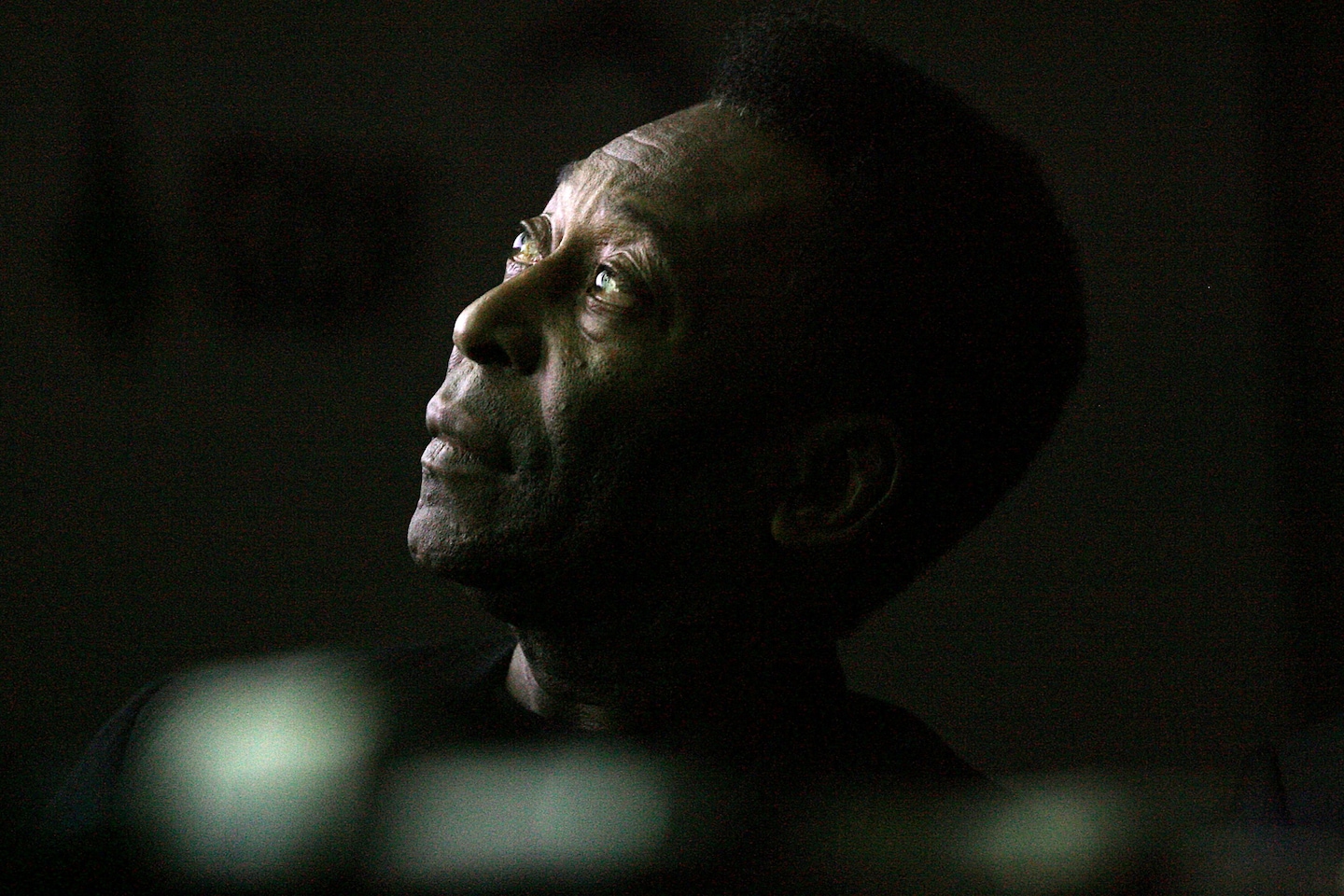|
Getting your Trinity Audio player ready...
|
Just as Ali eclipsed his craft, Pelé transcended the sport, holding sway over audiences with magnetism and a million-dollar smile. And when he addressed the 77,000-plus fans, telling them, “Love is more important than what we can take in life,” he asked them to chant, “Love, love, love.”
Almost in unison, they abided.
“My friend, my friend!” Ali told him before the game. “Now there are two of ‘The Greatest.’ ”
On Thursday, six years after the planet lost Ali, the world lost one of the 20th century’s other revered sports figures: Pelé died at 82.
He was born Edson Arantes do Nascimento, named for inventor Thomas Edison, in a small city, Três Corações, or Three Hearts. The world would know him by his stage name, which had no specific meaning but, as the decades passed, meant the world to billions.
Long before Prince, Shakira and Beyoncé, there was soccer’s one-name wonder, Pelé. It was not an intentional marketing ploy; Brazilians often go by one name. But more than 40 years after his last competitive game, he remained one of the most recognizable names on the planet.
He will go down in history as one of the sport’s greatest players, if not the best. Vigorous dissent will rise from Argentina, which claims Diego Maradona and Lionel Messi. Who is best? Who cares? Each offered enormous happiness.
“I was born for soccer,” Pelé once said, “just as Beethoven was born for music.”
He did not coin the phrase “the beautiful game” to describe soccer, but he did popularize it.
Pelé’s legacy remains at work in America. His name has resonated for decades, in particular for those who grew up in the 1960s and 1970s. For a younger generation, he is a mythical being, reduced to grainy videos that provide evidence of his brilliance as a goal scorer, creator and innovator.
His greatest contribution here was igniting the soccer boom and introducing a sport that had not even reached niche status. In suburban parks, soccer became fertile ground for a sport that did not require exceptional height or strength. Long before playground basketball hopefuls wanted to be like Mike, the soccer brigade wanted to be like Pelé.
He played stateside for just 2½ years, past his prime but still magnificent following a sterling career with Santos and the national team. His impact, though, was profound.
Because of him, generations embraced soccer, learned its nuances and pleasures and passed along its joys. What parent hasn’t taken a turn as a youth coach?
After Pelé’s farewell, the North American Soccer League lasted just seven more years, through 1984. The foundation, though, had been laid for FIFA to award the 1994 World Cup to the United States and set attendance records that still stand.
The tournament will return in 2026, a joint venture with Mexico and Canada. The United States will become just the sixth country to host the tournament multiple times.
If not for the 1994 World Cup, MLS probably would not have launched two years later. The league is approaching 30 teams, and numerous stadiums have risen with soccer in mind.
The sport’s growth helped elevate the men’s national team to the World Cup almost every four years since 1990, sparked women’s pro leagues and crafted the most decorated women’s national team in the world.
These days, famous European clubs have built hardcore U.S. followings and league matches are omnipresent on TV.
“Without Pelé coming to the Cosmos, it’s an arguable point the sport might never have reached the heights it’s at today,” Jim Trecker, the Cosmos’ communications director during Pelé’s stay, said in an interview. “He ignited people’s interests, and millions were introduced to soccer because of him — solely.”
Pelé does not deserve credit for everything. With or without him, Latin American demographics would have grown the game and technology would have made watching it more accessible. What he did was bring soccer into the mainstream and onto Madison Avenue. He made it cool.
Pelé understood it would take more than bicycle kicks and hat tricks to draw an American public nourished on football, baseball and basketball. Soccer needed a showman to make a genuine pitch, to highlight the game’s beauty and nuance and to win over a curious public and a skeptical media.
Pelé embraced celebrity, joining the New York sports constellation featuring Joe Namath and Reggie Jackson, among others. He and the Cosmos were VIPs on the nightclub circuit. His stage grew larger each season — from Downing Stadium on Randall’s Island on the East River to Yankee Stadium and then to Giants Stadium, where average attendance swelled to 34,000 in 1977.
On the road, the Cosmos were the circus and a Broadway blockbuster rolled into one, with Pelé starring alongside West Germany’s Franz Beckenbauer and Italy’s Giorgio Chinaglia in a lineup that could have competed with the best in the world.
So many opposing players wanted to swap jerseys with Pelé after matches, the support staff would bring a stack of extras on the road.
In a 1976 preseason game in San Antonio, it became clear the crowd was going to rush the field at the final whistle and mob him. With about five minutes left, the team made sure a car was running outside a tunnel. When the ball rolled out of bounds near that exit, Pelé acted as if he would retrieve it for a throw-in. Instead, he dashed to the vehicle.
He went where the sport needed him, whether it was the Rose Bowl or Virginia’s W.T. Woodson High, where the Washington Diplomats played in 1976.
Pelé’s final NASL regular season match was at Washington’s RFK Stadium, and his last official appearance came at Soccer Bowl ’77 in Portland, Ore. He went out a champion. Early this year, Pelé tweeted his memories of the farewell game at Giants Stadium.
“On the last day of work, I cried with joy and sadness at the same time,” he wrote. “Joy for the journey. Sad because it had to end. But above all, with a heart full of gratitude.”
Citizens of the world felt the same.



